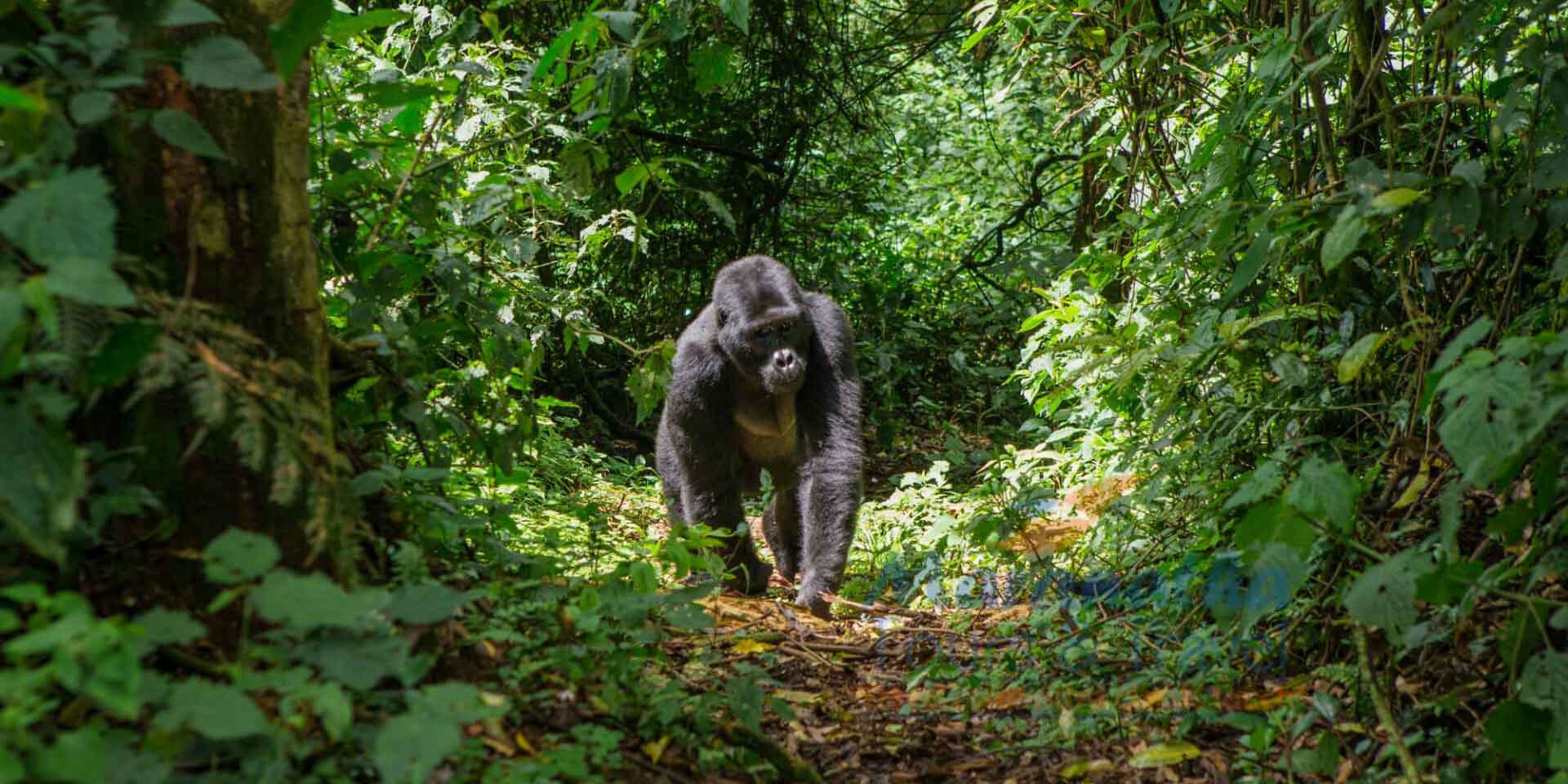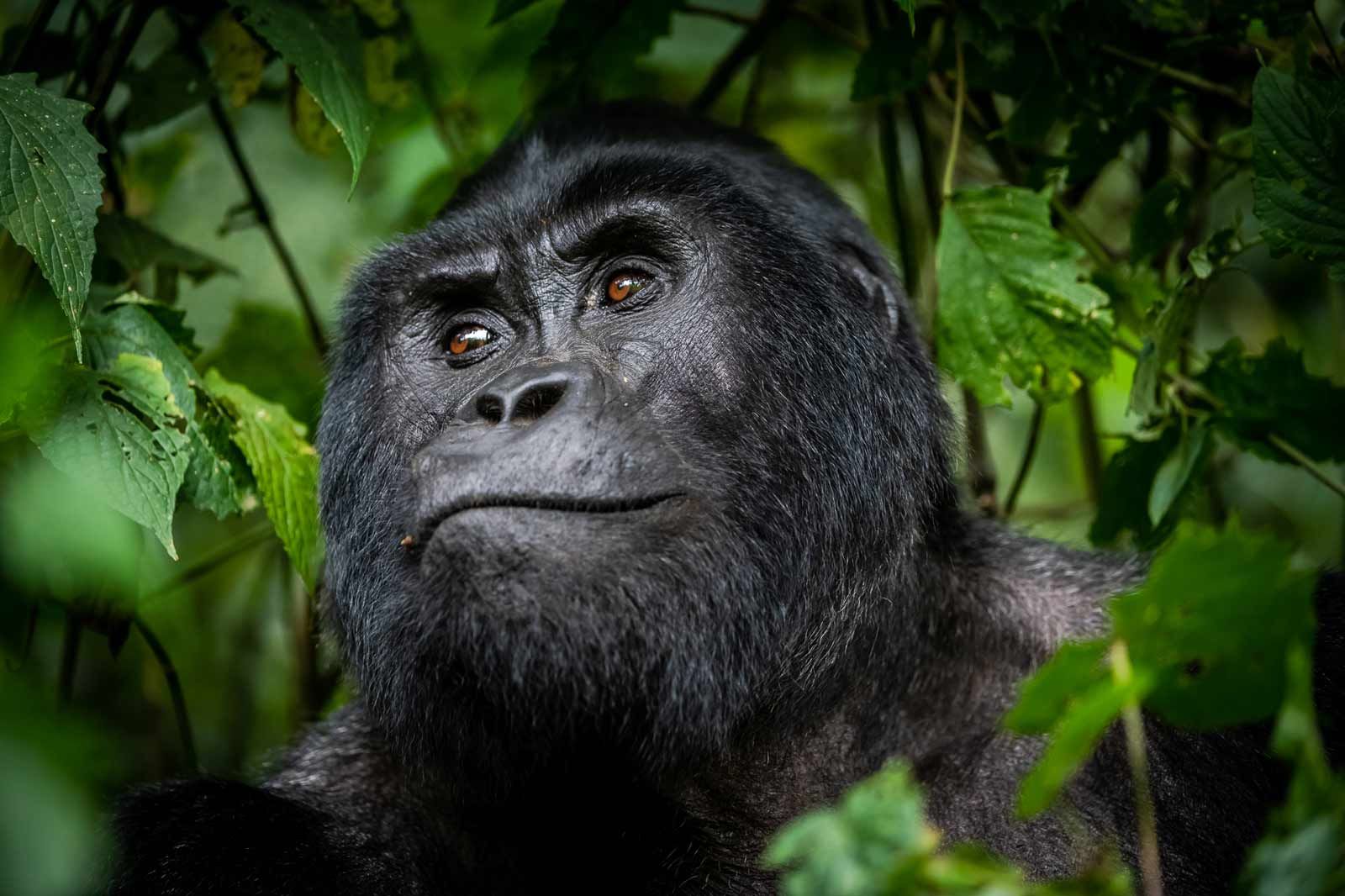How Do Mountain Gorillas Move?
Have you ever wondered how mountain gorillas move? Do they crawl? Do they walk quadrupedally? Do they walk on their knuckles? Do they move upright? It is interesting to know how these creatures walk but all in all, these Great Apes like Chimpanzees mostly use knuckle-walking (meaning they use all their four knuckles for moving around and about).

Gorilla Trekking in Bwindi Impenetrable National Park
The endangered Great Apes of the Virunga Mountain slopes and Bwindi Impenetrable Forest are known for knuckle-walking for 95% of the time in their natural environment. From time to time, the mountain gorillas rise up to walk on their two hind legs, known as bipedal-walking and it is normally for short distances or when displaying. While their knees and trunks remain bent while rearing up, their upper body is not like the one in humans which becomes vertical in addition to legs making one line with an axis in some steps of movement.
While mountain gorillas rarely climb trees, they do it quadrupedally (using all four limbs) and occasionally brachiate. Chimpanzees and smaller monkeys jump from one tree branch to another, which is not the case with these larger Great Apes (gorillas). If need be, trees are climbed with hands as well as feet to enclose the tree trunk while clamping with their huge toes. The bigger tree trunks are enclosed with their long arms as well as raising themselves up using their feet. Climbing trees is different from moving on the ground, where fingers are curled and the second joint of fingers on the ground while shifting weight.
Unlike Chimpanzees, the mountain gorillas don’t stretch their wrists much while moving and their medial joints get somewhat flexed while they swing their limbs.
Reasons why Mountain Gorillas walk on their knuckles
Have you ever asked yourself why mountain gorillas walk on their knuckles? Surprisingly, there is no specific real explanation as to why the Giant Apes use knuckle-walking, but several theories were used to explain this outstanding behavior. These are the reasons. First, their body structures support and make it possible for knuckle-walking than Bipedal-walking, which is normally used for short-distance movement.
It is also said that these Great Apes have adapted to knuckle-walking as a way of reducing the impact that their body weight would have had on their soft and delicate forelimb tissues.

Gorilla Trekking in Uganda
Another reason for knuckle-walking among outstanding gorillas is related to the size and anatomy of their forearm and the exceptional shape of their trunk that is completely exceptional from the non-knuckle walking Great Apes like humans. Additionally, part of their metacarpal and carpal bone features along their forelimbs are said to have been re-modeled overtime to enable their unique posture. Walking on knuckles also assists mountain gorillas in accomplishing a number of tasks such as handling food as well as manipulation of objects. Bipedal movement is ideal when carrying food or while defending themselves.
It is also believed that knuckle-walking behavior evolved from an adaptation that is indigenous to the chimpanzees as well as the Gorilla family. Not only that, these creatures are likely to have developed this unique movement posture by independent acquisition and this has been proved by the fact that there are no other fossil primates that used knuckle-walking. Quadrupedal (animals that walk on four limbs) have longer arms than those of Bipedal animals (those that walk on two limbs) and their body weight is distributed on the upper body than it is with the lower body parts.
Besides Mountain gorillas (or any other gorilla sub-species), other animals that use knuckle-walking are the pangolins, Platypuses, and Giant ant-eaters among others. These Giant Apes are one of the largest primates on Earth, weighing from 180 to 220 kilograms with the potential of growing up to 5.9 feet tall.
